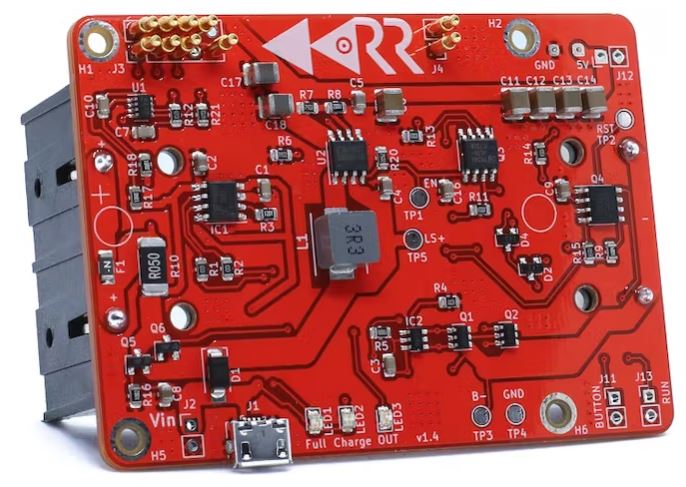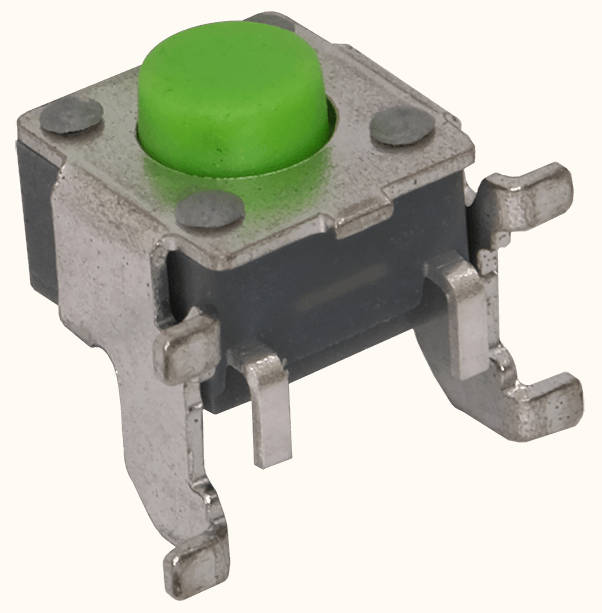
Raspberry Pi and some similar single-board computers have over the years become extremely versatile for designing a variety of systems, ranging from radios to remote monitoring systems to gaming consoles, media servers, and up to fully featured personal computers. In fact, there is hardly anything you want to build these days that wouldn’t need a single-board computer. However, one thing I’m sure you would not want to experience while working with a Raspberry Pi is a sudden power loss because not only could it affect or corrupt your SD card, it could cause your entire device to malfunction. To this end, Pascal Herczog, a successful start-up founder and CTO in the wireless business, who is very passionate about building new gadgets, has designed a powerful battery power supply solution for your Raspberry Pi projects: the Red Reactor.
Two great things about the Red Reactor: it offers extremely reliable battery power for your Raspberry Pi projects and also fits neatly underneath your Raspberry Pi without bulking out the footprint of your project.
“Where other battery power solutions simply fail to deliver on the key requirements,” says Herczog, “the Red Reactor provides everything you need for a robust, powerful, and easy-to-integrate battery power supply!”
“Don’t think of the Red Reactor as just another battery power supply,” added Herczog. It is designed in a way that enables you to “maximize battery life (using the hugely popular, highly capable and cost effective 18650 batteries) with carefully managed charge cycles and ultra low stand-by power, yet is able to drive large loads whilst giving you accurate battery information in software to decide when to safely shutdown.”
The Red Reactor was designed with every requirement that you can think of:
- It delivers current enough for a Raspberry Pi, a display and other ancillaries
- It reads the actual battery voltage and current in software for safe shutdown
- Maintains battery life with a fused, battery overcharge, over-discharge and over-current protection
- Can operate from standard 5v USB adaptors
- Extends battery life with a circuit design that prevents draining whilst charging
- Draws a minimal amount of current when not in use (less than 100uA)
- Transits seamlessly from the battery to mains even when under high load
- Can detect in the software when the charger is connected or disconnected.
- Allows for seamless integration with your projects, adding ON button, RESET, and power to ancillary devices.
- The rear has a holder for a pair of low-cost lithium-ion 18650 batteries, thus eliminating the use of custom battery connectors
- You can attach the Red Reactor below the Raspberry Pi, enabling normal use of 40-pin GPIO header.
The fact that the Red Reactor consumes just a few micro-amps in standby mode makes it a perfect choice when building something that only needs to wake up, say once an hour, or per day before completely shutting down. You could get almost a year or more battery life for your remote monitoring applications.
The board will be available in two variants depending on the one that is most appropriate for your projects: a pogo-pin version that provides a solder-less connection to your Pi and a Headerless version without the pogo-pins. Both versions have standard 2.54mm pitch 2-pin mounting holes. Board Dimension is 78.7mm by 56mm by 29mm including stand-offs and battery holder.
This GitHub page explains the steps to follow to install the Red Reactor Pi-Battery Widget on your Raspberry Pi OS Desktop.
“Simply configure your battery capacity and it will model both charge and discharge times, show Voltage and Current, provide a low battery warning and automatically force a safe shutdown when necessary.”
There’s also a remote monitoring website where you can monitor everything you need to know about your battery such as the voltage, current, charging battery status, and CPU temperature.
Other useful information about the Red Reactor board including a detailed technical manual, tested software examples that you can easily install and use for your projects, as well as a video that shows how to assemble it with your Raspberry Pi, can be found on the Kickstarter Crowdfunding campaign page where the project was pledged with a $10,061 goal. Early bird backers start at around $35, and shipment is expected to start in January next year.







